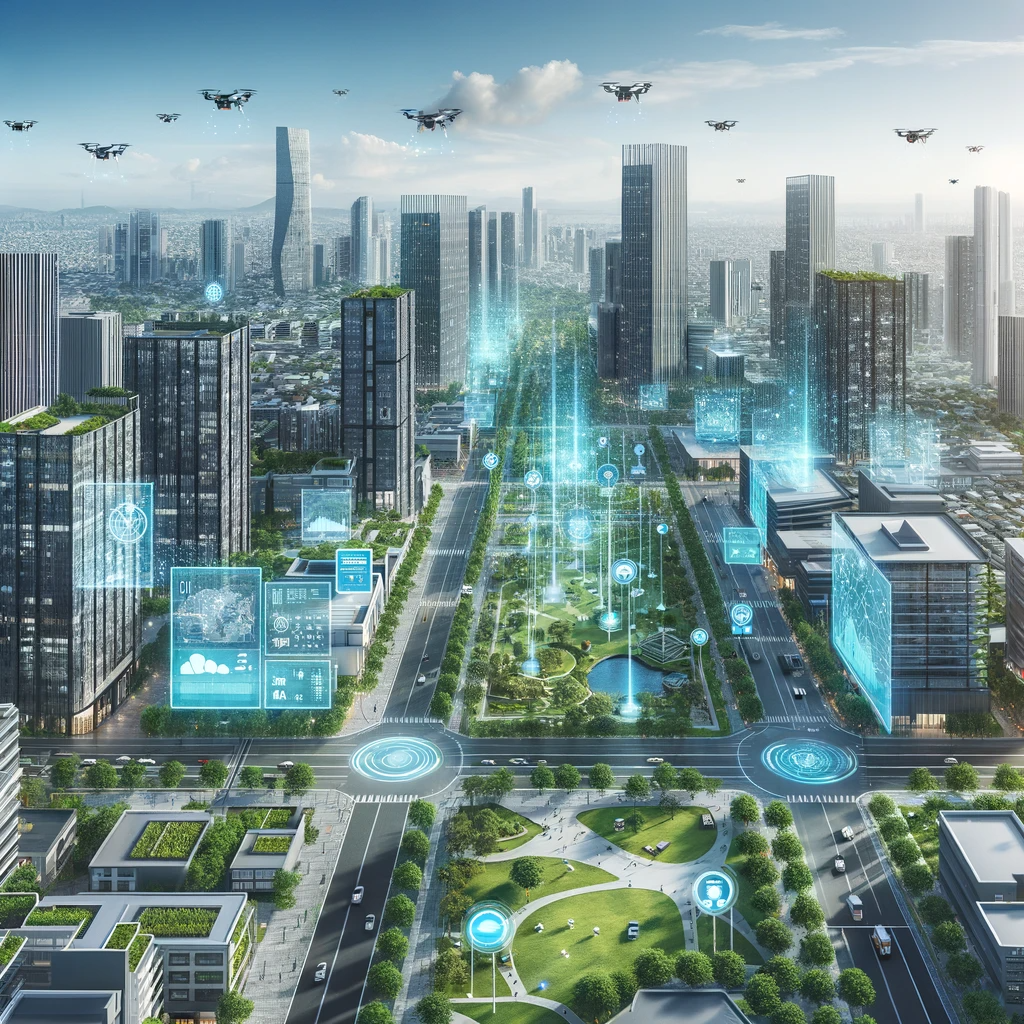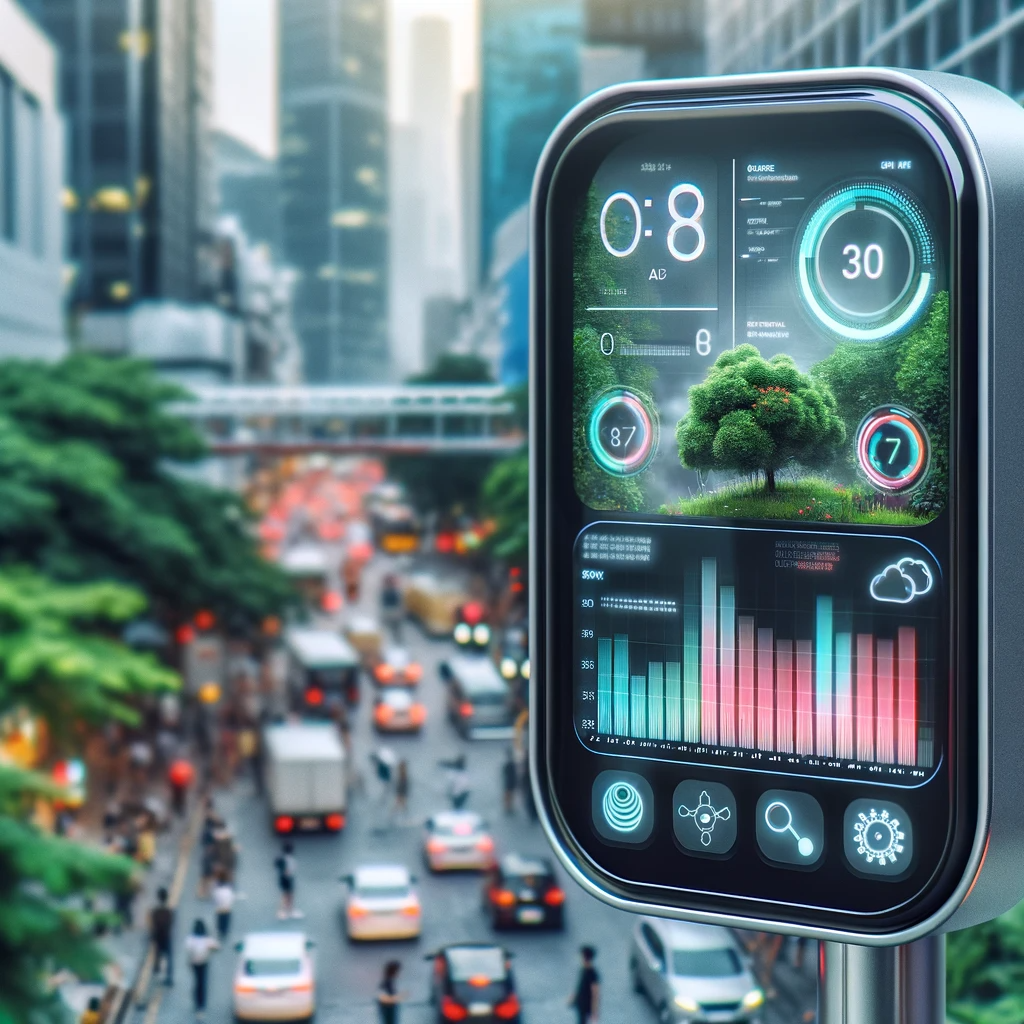Clean and breathable air is a fundamental requirement for sustaining life on Earth. However, in recent years, the quality of the air we breathe has become a growing concern due to increased industrialization, urbanization, and various anthropogenic activities. The consequences of poor air quality are dire, impacting not only the health and well-being of individuals but also the long-term health of our planet. As the world grapples with the challenge of mitigating air pollution, artificial intelligence (AI) emerges as a powerful tool with the potential to revolutionize the way we monitor and manage air quality.
This article delves into the exciting realm of AI-driven air quality monitoring and management, shedding light on how cutting-edge technologies are transforming our approach to this critical issue. From revolutionizing data collection to providing actionable insights for environmental strategies, AI is poised to play a pivotal role in our fight for cleaner and healthier air. In the following sections, we will explore the current state of air quality monitoring, the role of AI in data collection and analysis, its contribution to environmental strategies, as well as the challenges and ethical considerations associated with its implementation. Ultimately, this article aims to provide a comprehensive understanding of how AI is reshaping our efforts to safeguard air quality and, by extension, our future.
The Current State of Air Quality Monitoring
The traditional methods of air quality monitoring have been foundational in our understanding of pollution levels. These methods typically involve stationary monitoring stations and manual data collection processes. However, they come with significant limitations. Stationary monitoring stations offer localized data and may not cover areas with dynamic pollution sources. Manual data collection is often time-consuming and can lead to delayed reporting, which is less than ideal when addressing rapidly changing pollution patterns.
Growing Concerns About Air Pollution
As the world becomes increasingly urbanized and industrialized, the concerns surrounding air pollution continue to mount. The negative health impacts of polluted air, including respiratory diseases and even premature deaths, have raised alarms. Statistics and examples from around the globe underscore the urgency of addressing this issue. The need for real-time, accurate, and widespread air quality monitoring has never been more evident.
AI in Air Quality Monitoring

AI’s Role in Data Collection
Artificial intelligence is ushering in a new era of air quality data collection. Cutting-edge technologies like sensors, drones, and satellites equipped with AI capabilities are now employed to gather air quality data. AI-driven data collection offers several advantages. It enables continuous monitoring, ensuring that even transient changes in air quality are detected. Furthermore, AI-powered devices can cover vast areas, providing comprehensive insights into pollution levels.
AI in Data Analysis
The true potential of AI in air quality monitoring lies in its ability to analyze vast datasets rapidly and accurately. AI algorithms excel at identifying pollutants, their sources, and emerging trends. By processing data in real-time, AI can provide insights that were previously unattainable. Researchers and environmental agencies are increasingly turning to AI to gain a deeper understanding of air quality dynamics.
AI’s Contribution to Environmental Strategies
Real-time Alerts and Public Awareness
One of AI’s most immediate contributions is its ability to provide real-time air quality alerts to the public. Through mobile apps and online platforms, individuals can access up-to-the-minute information about air quality in their vicinity. This empowers people to make informed decisions, such as modifying outdoor activities on days with poor air quality. Additionally, public awareness is raised, fostering a collective commitment to improving air quality.
Decision Support for Policy Makers
AI-generated insights have the potential to influence environmental policies significantly. By analyzing large datasets and identifying pollution hotspots, AI can provide valuable information to policymakers. Case studies from regions where AI has already played a role in shaping policy decisions highlight its effectiveness in guiding regulatory actions.
Predictive Modeling and Pollution Mitigation
AI’s predictive capabilities extend to forecasting future air quality conditions. By factoring in various variables, including weather patterns and emission sources, AI can predict pollution levels with remarkable accuracy. This foresight allows for proactive measures such as traffic management, emission reduction strategies, and urban planning to mitigate air pollution.
Challenges and Ethical Considerations
Data Privacy and Security
While AI offers immense potential, it also raises concerns regarding data privacy and security. The collection and sharing of air quality data, often involving personal information and sensitive locations, must be handled with care. Stringent data protection measures are essential to prevent misuse and unauthorized access.
Bias and Fairness
AI algorithms are not immune to biases present in the data they are trained on. In the context of air quality monitoring, biases could lead to inaccuracies or favor certain regions or demographics. Ensuring fairness and transparency in AI systems is crucial to maintain trust and effectiveness.
Technological Limitations
Despite its promise, AI in air quality monitoring is not without limitations. Technological constraints may include the cost of implementing AI solutions, the need for ongoing maintenance, and the challenge of adapting AI to varying environmental conditions. Ongoing research and development efforts aim to overcome these hurdles.

The Future of AI in Air Quality Management
Looking ahead, AI holds the promise of further advancements in air quality management. As AI technologies continue to evolve, we can expect more accurate and comprehensive monitoring, as well as increasingly sophisticated predictive models. These developments will be instrumental in addressing emerging environmental challenges.
Conclusion
In conclusion, the integration of artificial intelligence into air quality monitoring and management represents a pivotal moment in our quest for cleaner air. AI’s capacity to collect, analyze, and act on air quality data is redefining how we approach pollution control. While challenges such as data privacy and bias need to be addressed, the potential benefits are undeniable. With AI as a steadfast ally, we are better equipped to safeguard the air we breathe, ultimately ensuring a healthier and more sustainable future for generations to come.
